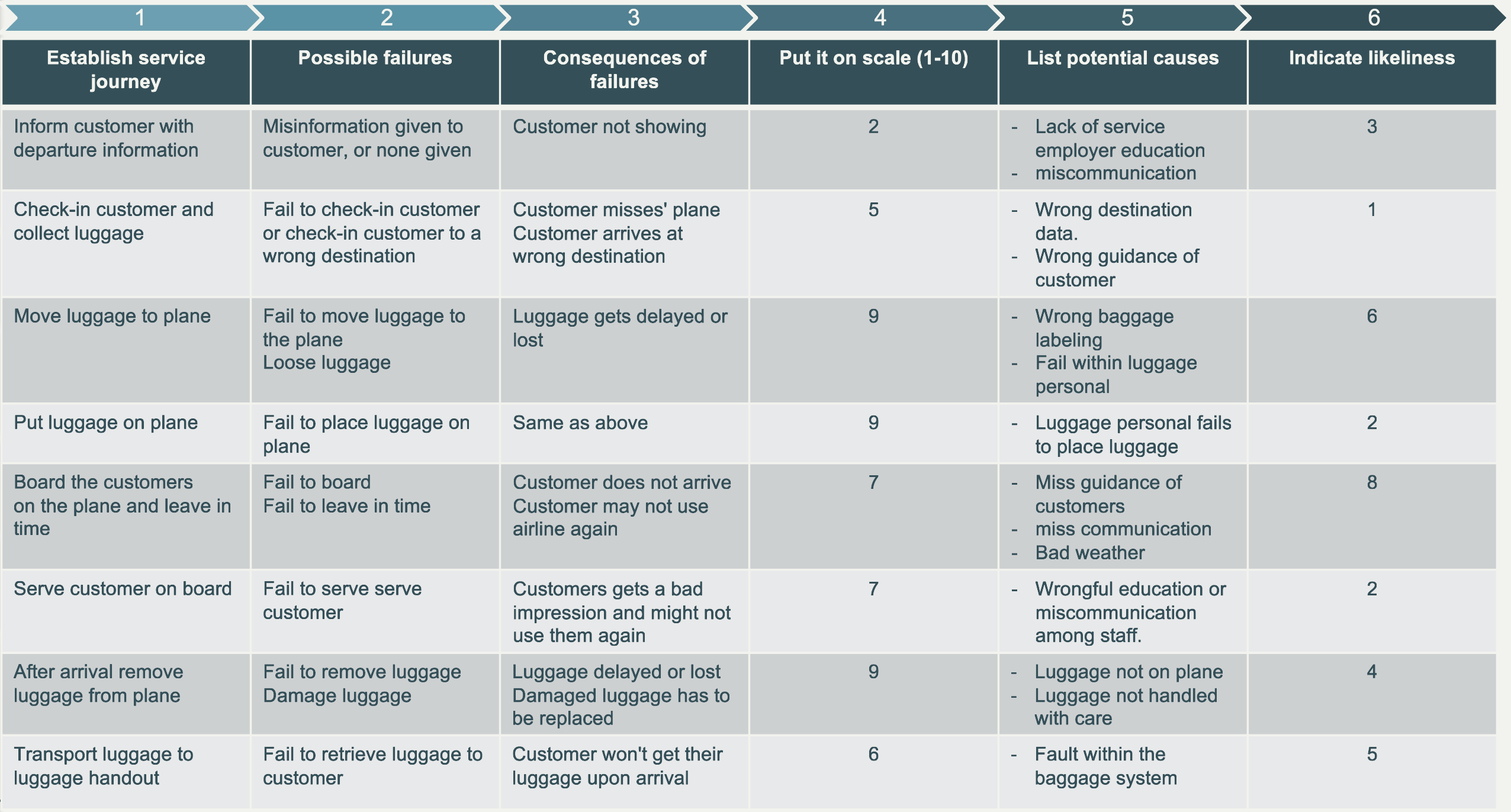FMEA
(→What does the tool consists of) |
(→What does the tool consists of) |
||
| Line 34: | Line 34: | ||
""Picture Coming"" | ""Picture Coming"" | ||
| − | [[File: | + | [[File:FMEA Example.png]] |
==== How does the tool work ==== | ==== How does the tool work ==== | ||
Revision as of 07:10, 2 April 2023
Contents |
Abstract
The Failure Mode and Effect Analysis.
A tool used for analyzing how potential events can occur doe to failure within the company or project team.
The elements analyzed with use of the FMEA tool, can be separated in a matrix and consists of failure events, how they can occur, why they occur and how the failure can be avoided.
The different scenarios then get graded with regard to impact-fulness and chance of occurrence, the multiplied score is the used to rank each risk failure event according to their importunateness.
The reason for the FMEA tool to have influence on the project management, is because the tool is strictly guiding the PM and his/her team to what topics to focus on in order to get a successful project result.
The following report will include:
Introduction to the FMEA tool
Invented to systematically test and analyze different ways in which a system can fail and with what following consequences that might occur. The tool was originally developed for military purpose in the 1950s but has become a more recognized failure mode assessment tool for the private industry. The FMEA tool is a datadriven brainstorm where to potential failures are listed and the consequences of the failures ranked for a clear overview of which elements to do damage control on or maybe change entirely. This makes a project manager or team able to improve their initial risk assessments [1]
What does the tool consists of
FMEA consists of a matrix with eight rows for a step-by-step approach. First row consists of the stages in the journey. If looking at an example as a flight journey, the different stages would be:
Greed customer in the airport -> receive luggage and print tickets -> ensure that the customer knows of where the plain leves from -> retrieve the ticket at the gate -> seat the customer on the plane -> serve food and beverages -> ensure that the plane lands safely -> retrieve the luggage to the customer.
After putting down all stages of the journey, the second step in the FMEA tool is to describe the potential failure mode for each state. Then the consequences for each failure is added, then the severity of impact, then potential cause, frequency of occurrence, then process controls/recovery actions and lastly the sum-score of the impact and frequency for the ranking of importance.
Here is an example of how the FMEA matrix would look
How does the tool work
Before using the FMEA matrix, it is important for the project manager to clearly understand if his/hers project is a system, product or process. To get the most from the tool, it is however important to apply it in an early stage of a project, this could be in the initialization of the risk assessments of a project or particular part of the project. This means that what ever result made from the assessment can potentially help avoiding a potential failure, before it happens.
Limitations of the tool
The FMEA has some clear limitations. Firstly, when using the tool, the output is very much defined by the quality of the input. To get the absolut bedst from the FMEA, the project manager needs to gather a lot of information, data and experience. However, if the quality of the out put is not as important as the result of the ranking, then the FMEA might still be a genuinely good tool for a project manager to manage risks and potential risks.
Application of the tool in practice
The FMEA tool would be applied by a project manager when looking into new projects. The PM should then gather the most experienced team within the project team and maybe even some prominent stakeholders, in order to get as many failure modes as possible. Then the PM could prioritise due to different sets of focuses on the project result. For instance, if a particular stakeholder has highly important needs from what the project delivers, then the potential failure modes affecting those needs would become relevant to encounter. [2]
Alternative applications
On an existing project, then the Project Manager could use the FMEA as an evaluation tool for current as well as previous incidents. The important difference here is that the tool would now be used with a focus on solutions to the failure modes rather than a pinpointing of which failure modes to analyze.
Final notes
References
- ↑ [http://www.innovation-portal.info/] Innovation Portal
- ↑ [http://asq.org/learn-about-quality/process-analysis- tools/overview/fmea.html/] General about FMEA
